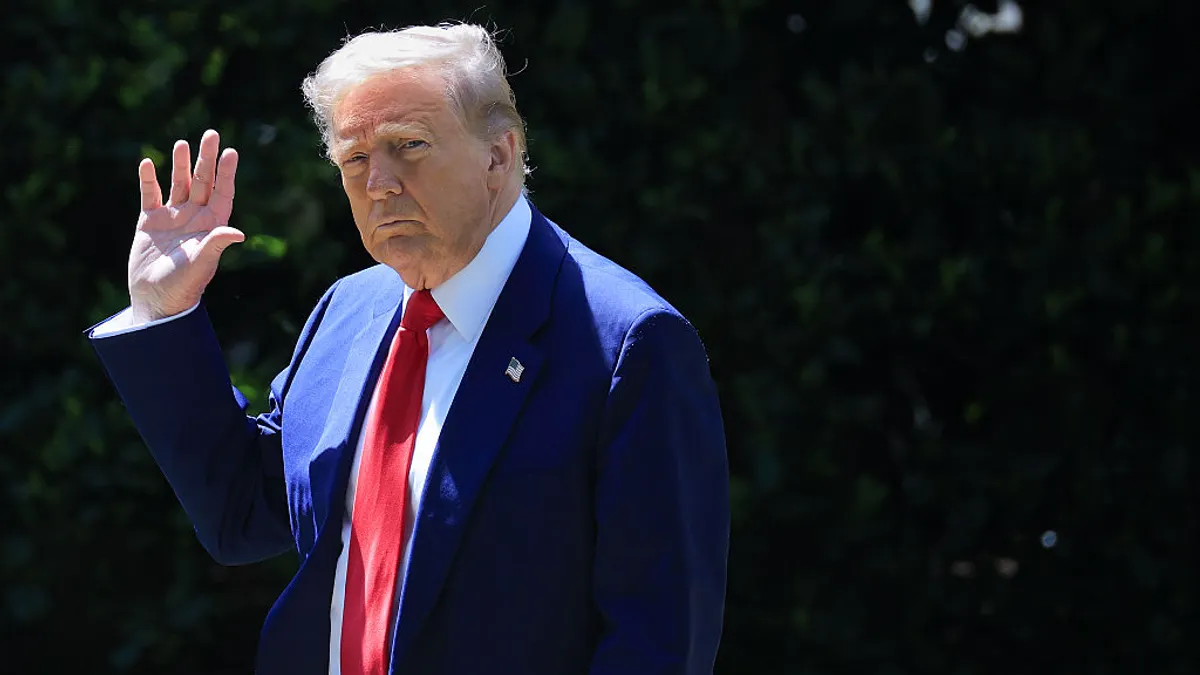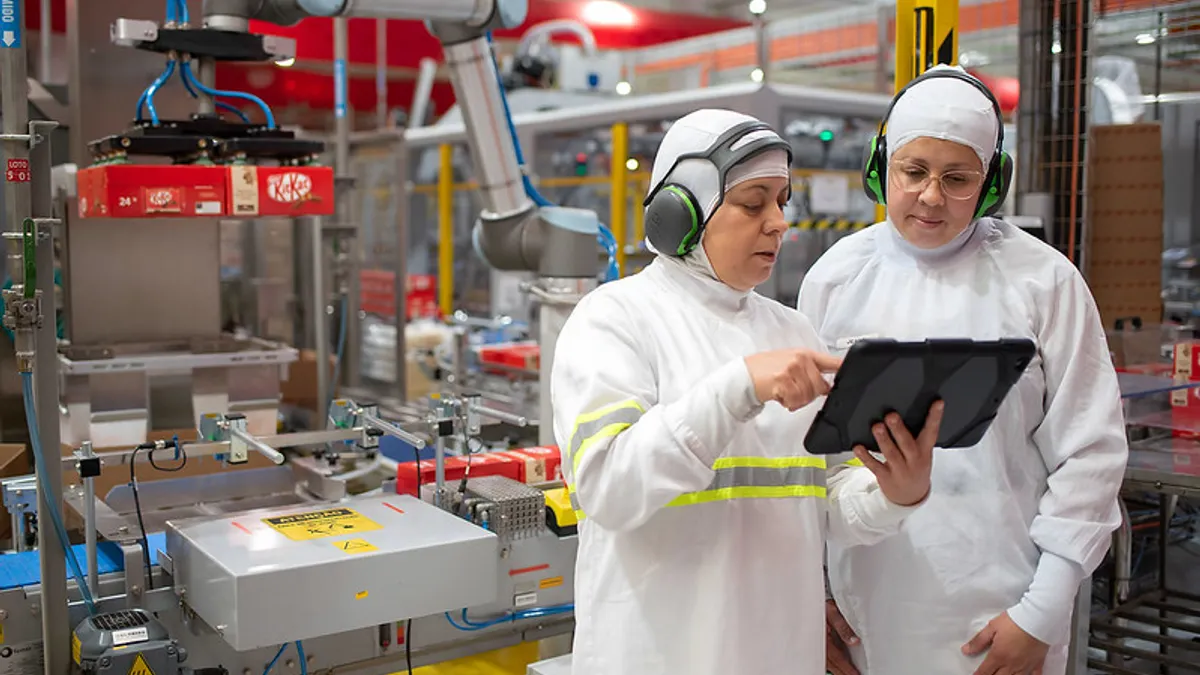Tariffs are pushing up manufacturing prices and hurting demand and production as President Donald Trump surpasses 100 days in office, according to the Institute for Supply Management’s April Purchasing Managers’ Index.
ISM’s April PMI registered a 48.7% in April, down from 49% the month before amid dropping industry confidence and confusion over the administration's tariff policy.
A reading below 50.0% reflects economic contraction.
ISM's production index dropped 4.3 percentage points to 44%, a worrying sign to Timothy Fiore, chair of the ISM’s manufacturing business survey committee, who said the measure is a surrogate for revenue and a direct reflection of the negative impact of tariffs.
Manufacturers pulled back on production to match weakening demand. Export orders, for example, plunged 6.5 percentage points to 43.1% as demand fell.
"We're headed in the wrong direction," Fiore said on a media call Thursday. "I don't see any relief in the near-term and in May we're going to see more of this."
Fiore highlighted that 82% of ISM survey respondent comments were related to tariff concerns, as manufacturers experience "tariff whiplash," amid rapid policy changes that have created confusion and uncertainty.
While S&P Global's April PMI report came in slightly more positive at 50.2, both selling prices and input costs rose sharply on the backs of tariffs. Like ISM, S&P's report noted falling demand and output.
"Factory output fell for a second successive month as tariffs were widely blamed on a slump in export orders and curbed spending among customers more broadly amid rising uncertainty," Chris Williamson, chief business economist at S&P Global Market Intelligence, said in a statement.
Across the broader supply chain, Fiore said he's concerned about slower supplier deliveries due to a now lengthier customs process at U.S. ports as a result of the tariffs. While slower clearance processes aren’t currently a huge issue due to lower demand, the economist said a rebound in orders could lead to ships backed up off the coast of California just as there were during the pandemic
"That supplier delivery number is not good on its own," Fiore said. "It reflects that it's harder to get material because of administrative stuff that's needed to clear deliveries."
The PMI reports came out a day after the U.S.’s quarterly gross domestic product report showed that the economy shrank in the first quarter. GDP fell at an annual rate of 0.3% in Q1, according to the U.S. Bureau of Economic Analysis. GDP grew 2.4% in Q4 2024.
The lower economic reading stands in stark contrast to President Donald Trump's show of confidence at the White House yesterday, where he welcomed executives from Hyundai, Nvidia, IBM and others to celebrate their recent U.S. manufacturing investments. The president highlighted that since the election, the companies present had pledged $2 trillion in new investments, which he attributed to "intelligently used tariffs."
"Together we're going to bring back the most beautiful words – 'Made in the USA,’" Trump said in his remarks. "We’re going to have 'Made in the USA' like we haven’t had before in a long time."
How the economy will fare amid this strategy, however, remains precarious. Fiore highlighted that he doesn't expect to see more stable trade policy until the second half of this year, leaving manufacturers in limbo for the next quarter.
"We're on the edge of the cliff, and hopefully we won't go over, but the signs here are not positive,” Fiore said.
Industry observers are now awaiting the release of the U.S. jobs report tomorrow, which could show how the trade war is impacting domestic employment.
















